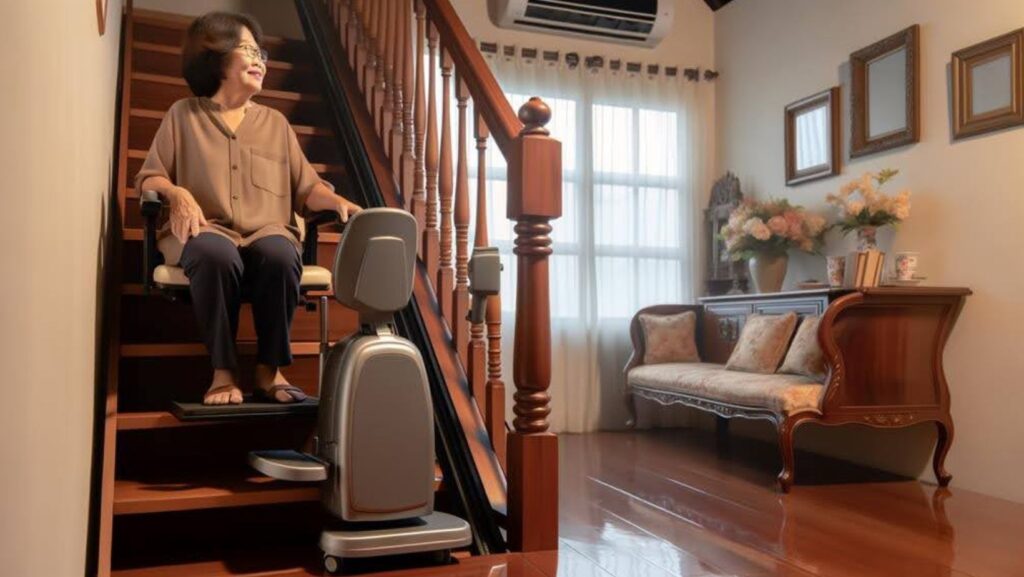Did you know that the cost of a stairlift can be as varied as the models themselves? When you’re considering investing in one, it’s essential to understand the different factors that influence the final price. From the type of stairlift you need—whether straight or curved—to the installation fees, which can fluctuate based on your staircase’s complexity, there’s a lot to think about. Don’t forget about ongoing maintenance costs and additional features that might be necessary for your specific needs. By grasping these cost elements, you can budget more effectively and make a well-informed decision. Curious about how these factors play out? Let’s explore further.
Types of Stairlifts
When considering the types of stairlifts, it’s crucial to understand that they fall mainly into three categories: straight, curved, and outdoor models. Each type serves a specific need, and choosing the correct one ensures safety and functionality.
Straight stairlifts are designed for staircases without any bends or curves. They’re typically the most straightforward and affordable option. However, if your staircase has any turns, you’ll need a curved stairlift.
Curved stairlifts are custom-built to match the precise contours of your stairs, making them more complex and often more expensive. They’re ideal for spiral staircases or homes with multiple landings.
Outdoor stairlifts are designed to withstand the elements and are perfect for those needing access to gardens or garages. These models are built with weather-resistant materials, ensuring durability in various climates.
Installation Fees
Understanding installation fees is essential because they can significantly impact the overall cost of your stairlift. When budgeting, you must consider several components, including labor charges and any permits required.
Labor charges can vary depending on the complexity of your staircase, the type of stairlift, and the installation company’s rates. Straight stairlifts usually incur lower labor costs compared to curved or custom models, which require more intricate installation.
Many localities mandate permits required for stairlift installations to ensure safety and compliance with building codes. You should check with your local government or your installation company to determine if permits are necessary and what the associated costs might be. These permits can add to your overall expenses but are crucial for legal and safety reasons.
Additionally, some companies bundle labor charges with the cost of the stairlift, while others itemize them separately. Make sure to obtain a detailed quote to understand what’s included.
Maintenance Costs
After considering installation fees, it’s equally important to budget for ongoing maintenance costs to ensure your stairlift remains reliable and safe.
Regular maintenance can prevent unexpected breakdowns and extend the lifespan of your stairlift. Many manufacturers offer warranty coverage that typically lasts between one to three years, covering parts and labor for repairs. However, it’s wise to read the fine print, as some warranties mightn’t cover all types of damage or wear and tear.
To mitigate unforeseen expenses, consider enrolling in service plans. These plans usually include scheduled inspections, lubrication, and adjustments to keep your stairlift in optimal condition. Service plans can range from basic packages, which offer annual maintenance checks, to more comprehensive ones that provide multiple visits and priority service for any issues that arise.
Not all maintenance costs are covered by warranties or service plans, so it’s prudent to set aside a budget for occasional out-of-pocket expenses. Routine tasks like battery replacements and minor part changes can add up, especially if they’re not included in your service plan. By planning for these costs, you’ll ensure that your stairlift remains a reliable asset in your home.
Additional Features
Many modern stairlifts come equipped with additional features that enhance safety, comfort, and convenience.

One of the most practical additions is the remote control. With a remote control, you can call or send the stairlift to the desired location, making it accessible for multiple users or easy to park out of the way when not in use. This feature is especially useful in multi-user households or when you need to transport items up and down the stairs.
Safety sensors are another crucial feature that can significantly impact your stairlift’s overall safety. These sensors detect obstacles on the stairs and automatically stop the lift to prevent accidents. This is particularly important in homes with pets or children, ensuring that the stairlift operates smoothly and safely without causing harm.
Additional features might include swivel seats for easier dismounting, adjustable seat heights, and even battery backup systems to ensure your stairlift works during power outages.
While these features can add to the overall cost, they provide invaluable benefits that enhance the usability and reliability of your stairlift. Investing in these enhancements can make a significant difference in your daily life, offering peace of mind and greater independence.
Financing Options
When considering a stairlift purchase, exploring various financing options can make this essential investment more affordable. Many providers offer flexible financing plans tailored to diverse financial situations, allowing you to spread the cost over manageable monthly payments. It’s crucial to look for 0% interest financing plans, which can significantly reduce your overall expenditure. Some companies even provide extended payment options that can stretch the repayment period up to 36 or 48 months.
A common financing method is through personal loans, which often come with competitive interest rates and fixed monthly payments. This approach not only offers predictability but can also be quicker to arrange compared to other options. Additionally, many stairlift suppliers partner with financial institutions to offer in-house financing, making the process seamless and often more lenient in terms of credit requirements.
Another viable avenue is insurance coverage. While not all policies include stairlifts, some health insurance plans or long-term care insurance might cover a portion of the cost. It’s worth checking with your insurance provider to understand the specifics of your policy.
Cost Comparison
How do you ensure you’re getting the best value for your money when comparing stairlift costs?
Start by evaluating brand differences, as not all stairlifts are created equal. Reputable brands often offer superior durability, safety features, and customer support. Look into reviews and testimonials to gauge reliability and performance. Brands like Stannah and Acorn have established reputations, but newer brands might offer competitive pricing and innovative features.
Next, keep an eye on market trends. The stairlift market is evolving, with advancements in technology and design impacting costs. For instance, modular stairlifts are becoming more popular for their ease of installation and maintenance, which can lower long-term expenses. Awareness of these trends helps you make an informed decision.
Also, consider the specific needs of your staircase. Straight stairlifts generally cost less than curved ones due to simpler installation processes. However, if your home requires a custom solution, expect higher costs.

Lastly, always get multiple quotes. This will give you a clearer picture of the market rate and help you identify any outliers.
Conclusion
In conclusion, when budgeting for a stairlift, every penny counts. You’ll need to weigh the costs of different types, installation fees, and maintenance expenses. Don’t overlook additional features that might be essential for your comfort.
Financing options can make a significant difference, so consider them carefully. Remember, ‘A stitch in time saves nine’—investing wisely now can save you more in the long run. Always plan meticulously and consult experts for the best advice.



